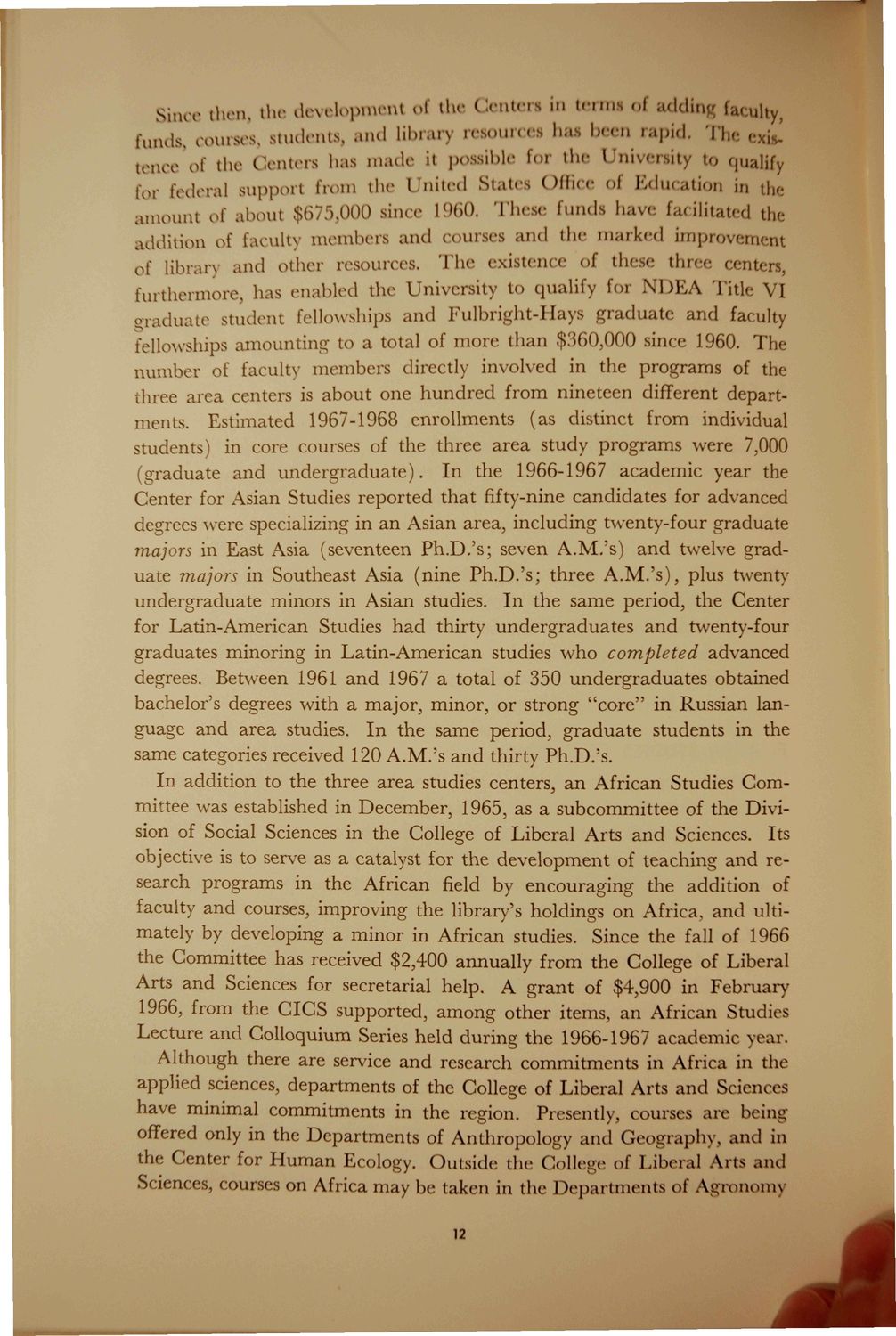| |
| |
Caption: Planning Report - Future of International Programs (1968)
This is a reduced-resolution page image for fast online browsing.

EXTRACTED TEXT FROM PAGE:
Since then, the development of the Centers ,,. termi oi adding I A funds, courses, students, and librarj resouro has been rapid. The exis. tence of the Centers has made il possible l.-i the I niveraity to qualify for federal support from die United States Oilier <f Kducation in the > amount of about $(i '.000 since I960. Tlirse fundi have facilitated the addition of faculty members and courses and tin marked improvement of library and other resources. The existence of these three centers, furthermore, lias enabled the University to qualify for NDEA Title VI graduate student fellowships and Fulbright-Hays graduate and faculty fellowships amounting to a total of more than $360,000 since 1960. The number of faculty members directly involved in the programs of the three area centers is about one hundred from nineteen different departments. Estimated 1967-1968 enrollments (as distinct from individual students) in core courses of the three area study programs were 7,000 (graduate and undergraduate). In the 1966-1967 academic year the Center for Asian Studies reported that fifty-nine candidates for advanced degrees were specializing in an Asian area, including twenty-four graduate majors in East Asia (seventeen Ph.D.'s; seven A.M.'s) and twelve graduate majors in Southeast Asia (nine Ph.D.'s; three A.M.'s), plus twenty undergraduate minors in Asian studies. In the same period, the Center for Latin-American Studies had thirty undergraduates and twenty-four graduates minoring in Latin-American studies who completed advanced degrees. Between 1961 and 1967 a total of 350 undergraduates obtained bachelor's degrees with a major, minor, or strong "core" in Russian language and area studies. In the same period, graduate students in the same categories received 120 A.M.'s and thirty Ph.D.'s. In addition to the three area studies centers, an African Studies Committee was established in December, 1965, as a subcommittee of the Division of Social Sciences in the College of Liberal Arts and Sciences. Its objective is to serve as a catalyst for the development of teaching and research programs in the African field by encouraging the addition of faculty and courses, improving the library's holdings on Africa, and ultimately by developing a minor in African studies. Since the fall of 1966 the Committee has received $2,400 annually from the College of Liberal Arts and Sciences for secretarial help. A grant of $4,900 in February 1966, from the CICS supported, among other items, an African Studies Lecture and Colloquium Series held during the 1966-1967 academic year. Although there are service and research commitments in Africa in the applied sciences, departments of the College of Liberal Arts and Sciences have minimal commitments in the region. Presently, courses are being offered only in the Departments of Anthropology and Geography, and in the Center for Human Ecology. Outside the College of Liberal Arts and Sciences, courses on Africa may be taken in the Departments of Agronomy 12
| |